Low-quality teachers, rural dropouts, learning divides: Can Asia solve this education crisis?
As their governments aim for reform, CNA series Shifting Horizons explores how Indonesia, India and China plan to overcome the systemic barriers between their students and quality education, and how technology may offer new solutions.

Outside a school in Jakarta.

This audio is generated by an AI tool.
JAKARTA/DELHI/BEIJING: Indonesia’s classrooms may be full, but the quality of education is falling short of the mark.
The country has 12 years of compulsory education, with enrolment rates at almost 100 per cent up to the age of 12. At secondary school, the pupil-teacher ratio is around 15:1, while the number of vocational schools has increased.
Yet, Indonesia ranked 69th out of 81 countries and economies in the 2022 Programme for International Student Assessment, which measures the reading, mathematics and science skills of 15-year-olds around the world.
“The World Bank refers to us as functionally illiterate,” said Indra Charismiadji, an education policy analyst. “Our young generation can’t learn anything because … they don’t understand what they’re reading.”
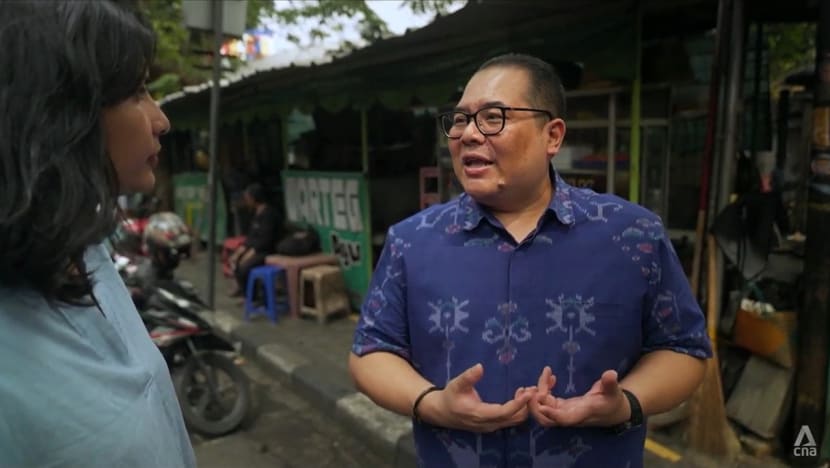
Indra, who has over two decades’ experience in education in Indonesia, saw the writing on the wall back in 2008: According to his research then, 30 per cent of high school English teachers in Jakarta could not speak the language.
And it is not just English. In 2015, when 1.6 million Indonesian teachers took a nationwide competency test, more than 80 per cent across all subjects and grade levels did not meet the minimum standards.
Indra thinks poor pay is a key factor. According to employment website Jobstreet, teachers are paid around 2.9 million rupiah to 5.5 million rupiah (US$180 to US$340) per month — comparable to call centre operators and hardly an incentive for teaching talents.
In China, rural schools are facing the opposite problem. Students are dropping out, and their absences are not showing up on official records.

Wan Yi, a postdoctoral fellow at Beijing Normal University, said this is tied to China’s policy of nine years’ compulsory education. Schools avoid reporting dropouts to keep in line with government mandates, even when students have left.
“Seven years ago, when I looked at the documents issued by the central government, they said, ‘We did find some dropouts, but it’s because of their individual reasons. They’re not fond of learning,’” she recounted.
She refers to these students as “invisible dropouts” and estimates that more than 60 per cent could have dropped out by grade nine, possibly owing to a lack of motivation to attend school.
The education system is not designed with rural students in mind, she said. The curriculum and textbooks are “very urban-centred”, when rural communities make up a third of China’s population.
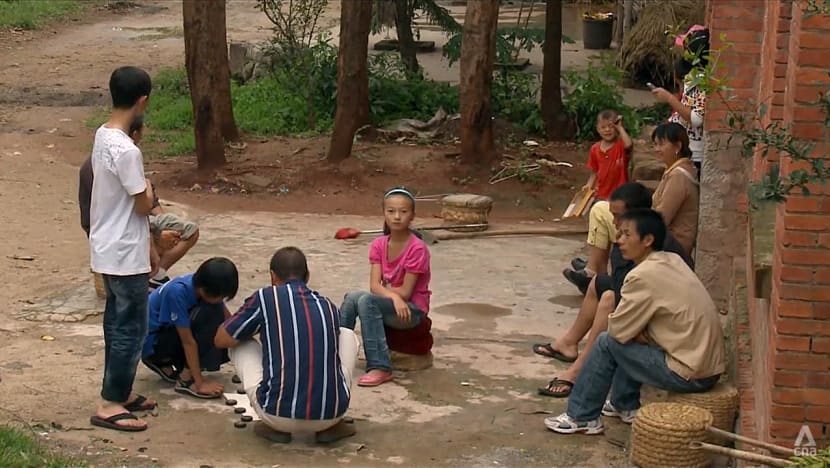
In neighbouring India, there is a wide education gap driven by both geographical and socio-economic factors. Academic performance tends to be better in urban areas compared with rural ones, while underprivileged communities in both settings lack access to quality education.
A study published in 2010 found that the mathematics test-score distribution in two Indian states, Orissa and Rajasthan, was the second most unequal in the world.
Education technology in the 2000s promised to level the playing field but has fallen short of this. In the past five years, more than 2,000 of India’s edtech companies have shut down.
Asia’s most populous countries are primed to lead global economic growth but must address a learning crisis to unlock their potential. Will their education systems fail the next generation before they can fully tap into the promise of an Asian century?
WATCH: Education crisis and reform in Asia’s schools — A look at Indonesia, China, India (46:33)
CNA series Shifting Horizons explores the systemic barriers between students and quality education in these nations, and how technology and reform could help bridge this gap.
INDONESIA: A “SUPER-APP” FOR TEACHERS
In 2022, Indonesia’s then education minister, Nadiem Makarim, publicly acknowledged the country’s learning crisis. By then, however, previous efforts to address it may have exacerbated the problem.
Muhammad Sayuti, dean of the Ahmad Dahlan University’s faculty of teacher training and education, said the government once flooded the market with teacher training programmes instead of sticking to “the calculations of supply and demand”.
“Actually, we didn’t need too many teacher training programmes. In many countries, the number of teacher training students is (strictly controlled).”
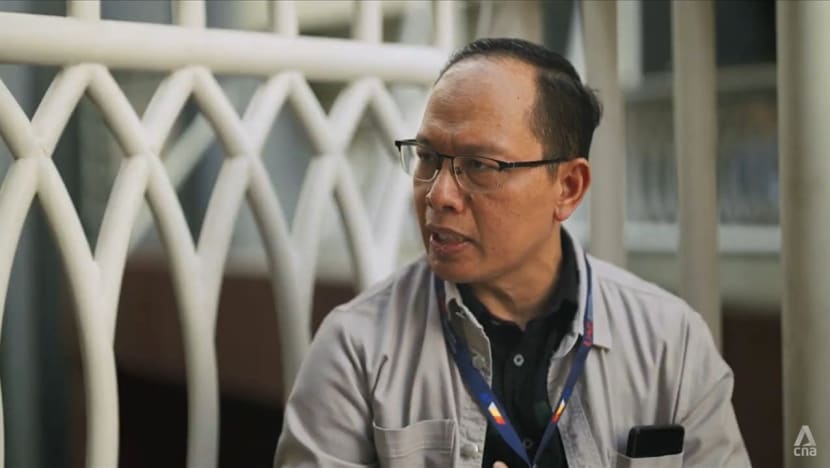
By 2015, with 374 teacher training institutes — 32 public and 342 private ones — Indonesia was producing about 200,000 more teachers yearly than could be employed each year, according to a 2017 World Bank report.
But as Indra put it, “The sad thing is, the government … keeps doing the same thing. (With) every new minister of education appointed, they just change the curriculum, printing more books.
We have 50 million students, 250,000 schools, 17,000 islands but no plan at all.”
The most recent reform, Merdeka Belajar, was piloted in 2021 and officially became the national curriculum last year.
Although its impact has been limited for now, the Merdeka Mengajar component of the curriculum — launched in 2022 to support teachers to navigate the new curriculum — has quickly evolved into a “super-app” for educators.
“After 1.5 years, Merdeka Mengajar already reached 80 per cent of the grade one to (grade) 12 teachers,” said Claudia Wang, partner and education lead for Asia Pacific at management consultancy Oliver Wyman.
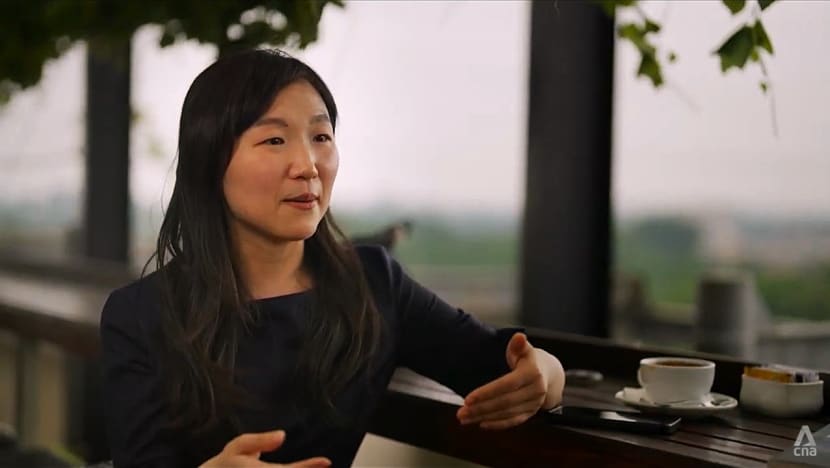
She leads a team of consultants tracking the platform’s progress through surveys of more than 100,000 teachers. Initial findings, published in 2023, showed increased classroom engagement and stronger professional ownership among teachers.
One such teacher, Syarafina Zahra from Al Azhar 5 Kemandoran Islamic Elementary School, uses the platform to create lesson plans and spends more than two hours a week on it.
Her favourite feature is its social networking, which allows teachers to connect, “share inspiration” and form support groups.
“This Merdeka curriculum places more emphasis on the students’ learning process, looking at their day-to-day learning rather than just their results. It also places more emphasis on project-based learning,” she observed.

The curriculum is under implementation in 90 to 95 per cent of elementary, junior high and high schools/vocational schools, the education ministry reported last July.
Structural reforms such as this are what will drive Indonesia towards its goals, which include having an “internationally competitive” education system by this year and increasing the number of Indonesian universities in the world’s top 500.
INDIA: EDTECH IN THE CLASSROOM
In India, home to one of the world’s largest schoolgoing populations — with more than 260 million students in grades one to 12 — the government aims to boost higher education enrolment to 50 per cent by 2035 and achieve 100 per cent literacy by 2030.
Literacy rates have improved over the years to about 80 per cent in 2023 among those aged seven and over. And in its latest budget, announced this month, the government plans to spend 1.29 trillion rupees (US$14.7 billion) on education.
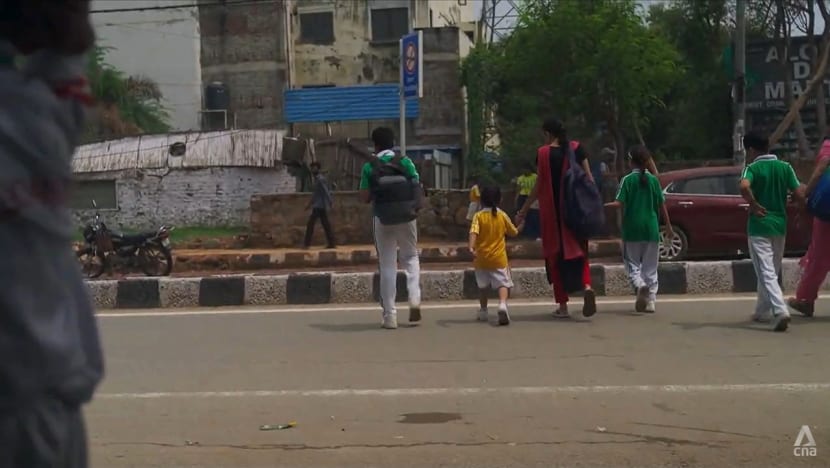
Despite these strides, significant educational disparities persist across the country.
While edtech apps are not the silver bullet they once promised to be, they can still play a role in enhancing learning outcomes when integrated thoughtfully into classroom settings.
Take, for example, the Lead Group, an edtech company founded in 2012 that partners with more than 8,000 schools across India, benefiting around 3.5 million students.
Loluck Baby, a senior director of Lead, said: “How to teach a student is more important than what to teach. … Teachers have a tablet as a tool and the TV as a resource, (with) a lesson plan on the tablet.”
The company’s approach is mainly focused on making lessons more interactive to boost knowledge retention.
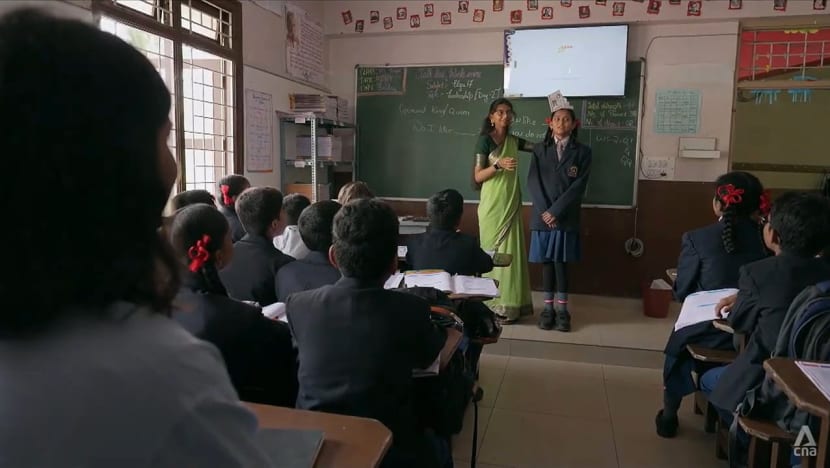
Disha C, an English language and general awareness teacher at New Indian Public School, which partners with Lead, recalled her experience as a student: “We were (memorising) the answers. And when exams came, we were writing (the answers by heart).”
Today, she instructs her students to do reading comprehension, understand the text and generate their own answers. “(My) work is only guiding them, so no mass answers,” she said.
Furthermore, students in the programme are not necessarily sorted by age but by their level of skill in a subject.
“We make sure that they start with the right level of language understanding,” said Loluck. “(In this way), it’s easy for the teacher to teach, and it’s easy for the child to learn.”
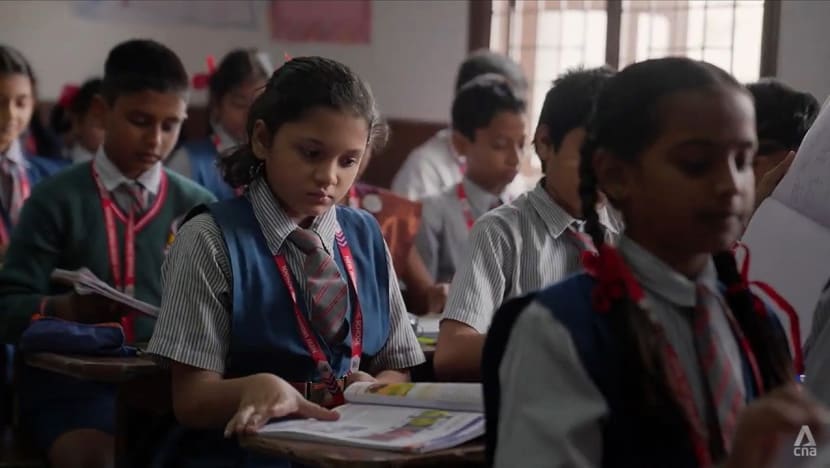
At the start of 2023, grade one to grade eight pupils at Disha’s school faced a learning gap of 1.5 to three years. By the end of the year, this gap had been reduced to 1.24 years, according to Lead.
The company also tracks the use of its resources by teachers to gain an insight into how they teach their lessons. “These things help us to understand what kind of execution is happening in the classroom,” Loluck said.
CHINA: ARTIFICIAL INTELLIGENCE TEACHING AIDS
China is also leveraging technology to improve its pedagogy and perhaps address the growing number of disengaged students.
In 2018, a quarter of China’s schools were reported to already be using artificial intelligence to grade essays. Then in 2022, China’s vice minister of education affirmed that his ministry was pushing for “AI-powered education evaluation”.
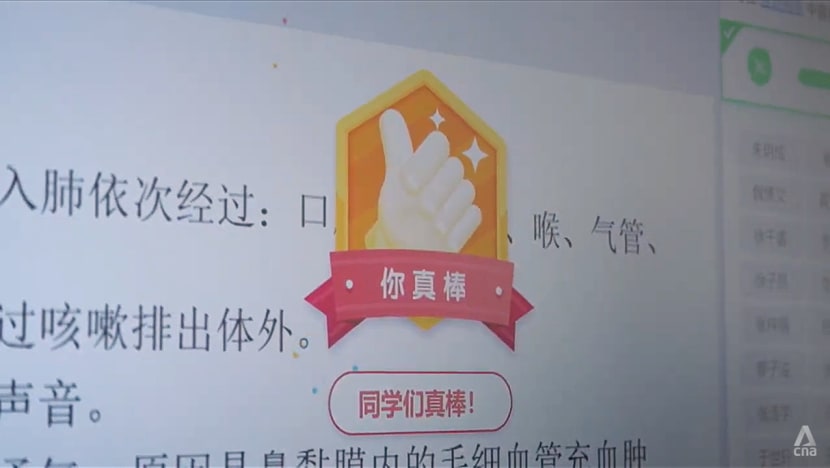
One company benefitting from this initiative is iFlytek, whose smart education products have been used in over 50,000 schools across 32 provinces.
Beijing Yuying Middle School introduced its AI teaching aids two years ago. And “compared with traditional teaching”, observed English teacher Wang Shanling, the new technology can give her “timely feedback in class”.
I can then evaluate the students’ performance in class based on this feedback and give them a chance to correct their mistakes immediately.
“The second advantage is that I can correct homework through AI after class. I can provide feedback on the homework immediately on the app … (and) have one-to-one feedback (sessions) with the students.”
There may be lags during usage, however, and the challenge of mastering the tools, she said. “The aids aren’t perceptive at times. Students also need to constantly upskill when using AI.”
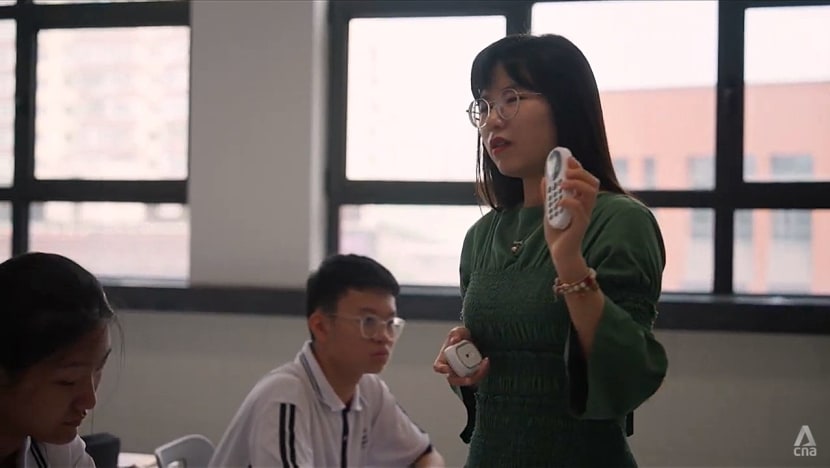
Physics teacher Kong Lingdong also sees a few snags with these teaching aids. “(They) may not be able to do well when dealing with issues that involve communication and emotional aspects of students,” he said.
“AI is an auxiliary tool. … I won’t replace real teaching methods with it.”
The shift towards AI is occurring not only in education, however. China aims to build an AI industry worth 1 trillion yuan (US$137 billion) by 2030, develop a workforce with AI competence and use the technology to power its economy.
Aligned with this long-term economic plan is China’s “education modernisation 2035 plan”. It aims, among other things, to narrow the gap between urban and rural areas and to increase “high-quality” undergraduate enrolment.
In terms of AI, more university students are already advancing their skills. Beijing University of Posts and Telecommunications, one of the first colleges to offer an AI major back in 2006, has seen a surge in enrolments.
“In the first year, we had only 30 (students); now we have 180 people majoring in AI every year,” said Wang Xiaojie, who heads the university’s Centre of Intelligent Science and Technology Research.
Still, there were only two qualified workers for every five new AI jobs in the country as at late 2023, according to Maimai, China’s alternative to LinkedIn.
It is not a field his parents really understand, but AI major and final year student Wen Xin is confident about his future.
“(AI) can be combined with any existing technology as a kind of empowerment — things like the steam engine or even electrical appliances,” he said. “AI is the biggest gold mine at present. We’re now the equivalent of gold miners.”
Watch this episode of Shifting Horizons here. And read about the series’ look at jobless youth in Asia’s biggest nations.

















